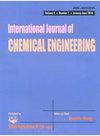基于氯化胆碱的深共晶溶剂热水力学实验研究
IF 2.3
4区 工程技术
Q3 ENGINEERING, CHEMICAL
引用次数: 1
摘要
熔盐堆(MSR)因其安全性和适用于小型模块化反应堆(SMR)而被认为是一种有前途的第四代核电站。此外,熔融盐用于集中太阳能(CSP)和作为储热介质的储能系统(ESS)。因此,熔盐作为储热介质和传热介质近年来得到了广泛的研究。然而,熔盐的高操作温度(>450°C)和高普朗特数使其难以在实验室中进行热工水力学实验。因此,在本研究中,选择了高普朗特数和高粘度的流体,即深共晶溶剂(DES)作为熔盐的模拟物。使用甘油进行了热工水力学实验,甘油易于合成,在各种DESs之间以高粘度流动时透明可见。此外,还测量了能量系统设计所需的摩擦系数和传热系数。结果发现,甘油是一种牛顿流体,从层流到湍流的过渡区的雷诺数比水的雷诺数低。此外,甘油的传热系数特性与现有的相关性在一定程度上一致。总之,在现有的理论中,甘油的摩擦系数和传热系数是可以预测的,但由于水力边界层和热边界层之间的流动发展行为不同,它们的过渡区域也不同。因此,据估计,当使用高Pr值和高粘度流体(如DESs和熔盐)作为储热和传热介质时,热工水力学实验是必不可少的。本文章由计算机程序翻译,如有差异,请以英文原文为准。
Experimental Studies of Thermal Hydraulics of Deep Eutectic Solvent Based on Choline Chloride
Molten salt reactor (MSR) is considered a promising 4th generation nuclear power plant because of its safety and suitability for SMR (small modular reactor). Also, molten salts are used in concentrating solar power (CSP) and energy storage system (ESS) as a heat storage medium. So molten salt has recently been researched a lot as heat storage and a transfer medium. However, molten salts’ high operating temperature (>450°C) and high Prandtl number make it hard to perform a thermal-hydraulic experiment in the laboratory. Thus, high Prandtl number and high viscosity fluid, deep eutectic solvents (DES), is chosen as a simulant of molten salts in this study. Thermal-hydraulic experiment using glyceline, which is easy to synthesize and transparent to visualize flow with high viscosity among various DESs, was performed. Also, the friction factor and heat transfer coefficient required for energy system designs were measured. As a result, it was found that glyceline is a Newtonian fluid, and the transition region from laminar to turbulent flow has a lower Reynolds number than water has. In addition, the heat transfer coefficient properties of glyceline were somewhat consistent with the existing correlations. To summarize, glyceline’s friction factor and heat transfer coefficient are predictable in existing theories, but the transition regions for those are different because flow development behavior between hydraulic and thermal boundary layers is different. Therefore, it is estimated that thermal-hydraulic experiments are essential when using high Pr numbers and high viscosity fluids such as DESs and molten salts as heat storage and transfer mediums.
求助全文
通过发布文献求助,成功后即可免费获取论文全文。
去求助
来源期刊

International Journal of Chemical Engineering
Chemical Engineering-General Chemical Engineering
CiteScore
4.00
自引率
3.70%
发文量
95
审稿时长
14 weeks
期刊介绍:
International Journal of Chemical Engineering publishes papers on technologies for the production, processing, transportation, and use of chemicals on a large scale. Studies typically relate to processes within chemical and energy industries, especially for production of food, pharmaceuticals, fuels, and chemical feedstocks. Topics of investigation cover plant design and operation, process design and analysis, control and reaction engineering, as well as hazard mitigation and safety measures.
As well as original research, International Journal of Chemical Engineering also publishes focused review articles that examine the state of the art, identify emerging trends, and suggest future directions for developing fields.
 求助内容:
求助内容: 应助结果提醒方式:
应助结果提醒方式:


